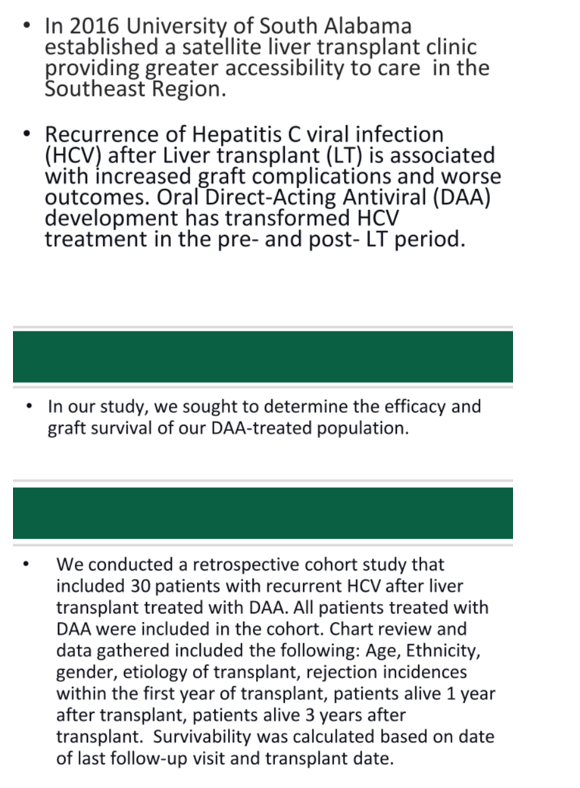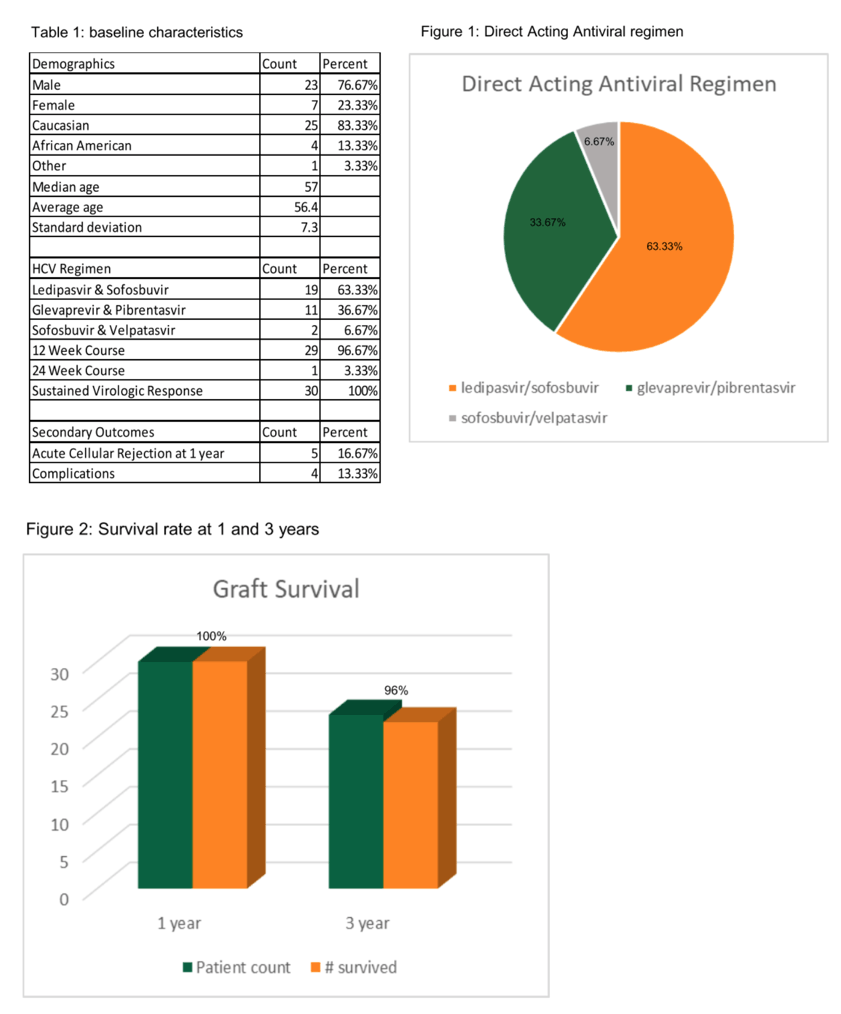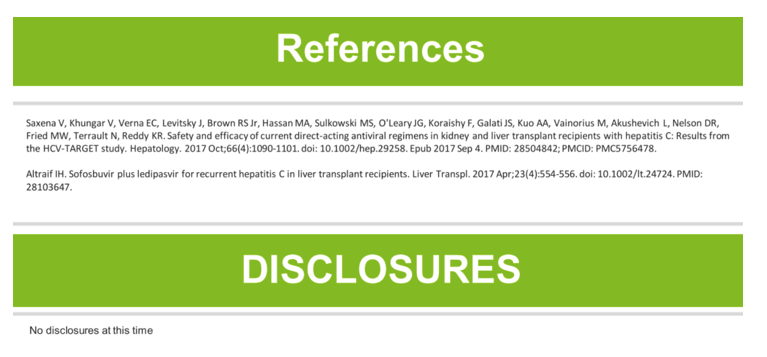 |
 |
 |
| |
TREATMENT OF HEPATITIS C RECURRENCE POST LIVER TRANSPLANT WITH ORAL DIRECT ACTING ANTI-VIRAL: A
REAL-WORLD EXPERIENCE FROM A SATELLITE CLINIC IN THE SOUTHERN UNITED STATES
|
| |
| |

AASLD 2021 Nov 12-15
Richard Trieu1, Phillip Henderson1 and Rajab Idriss1,2,3, (1) University of South Alabama, (2)Gastroenterology, University of South Alabama, (3)Gastroenterology and Hepatology, University of South Alabama
Background: Oral Direct-Acting Antiviral (DAA) development has transformed Hepatitis C viral (HCV) infection treatment in the pre- and post- LT period. Recurrence of HCV after Liver transplant (LT) is associated with increased graft complications and worse outcomes. In our study, we sought to determine the efficacy and graft survival of HCV patients treated with DAA after LT.
Methods: We conducted a retrospective cohort study that included patients managed at our pilot satellite liver transplant clinic affiliated with the University of Alabama at Birmingham. Since the start of the program in January 2016 till January 2021 a total of30 patients with recurrent HCV after liver transplant were treated with DAA . All patients treated with DAA were included in the cohort. Chart review and data gathered and included the following: demographics, HCV genotyoe, viral load, prior HCV treatment, DAA regimens, duration and sustained virologic response (SVR) at 12 and 24 weeks, rejection incidences within the first year of transplant, survival rate at one and three years.
Results: The cohort was predominantly composed of white male patients 76.67% males vs. 23.33% females; 83% White, 13% African American, and 3 % other. The median age was 57. Each patient had been treated with 1 of 3 possible oral combination DAAs (63.33% ledipasvir/sofosbuvir, 30.00% glevaprevir/pibrentasvir, and 6.67% sofosbuvir/velpatasvir). 29 patients were treated for 12 weeks and 1 patient was treated for 24 weeks. SVR was 100% amongst all three oral DAAs. All patient received treatment within the first 3 months after LT. The vast majority were treatment na´ve 80%. Most patients experienced Headache and fatigue as side effects. The cohort's 1-year survival rate was 100% and 3-year survival rate was 95.83%. 16.67% experienced Acute Cellular rejection within the first year of transplantation.
Conclusion: In our cohort patients with recurrent HCV after liver transplant treated with DAAs achieved 100% SVR. Excellent graft survival at 1 and 3 years post LT was noted. Reported side effects were mild and well tolerated. Treatment of HCV recurrence after LT with DAA is safe and effective.



|
| |
|
 |
 |
|
|